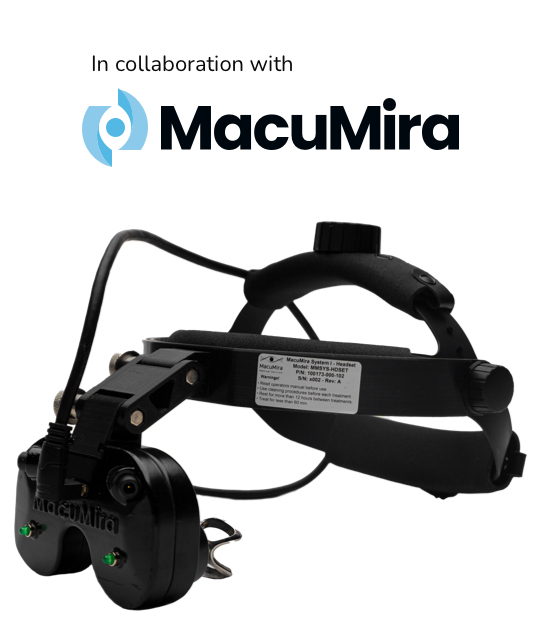Since 4ECPs works with optometry and eye care practices across North America clients frequently ask us how much money they should be dedicating to their practice’s marketing efforts, and we have found that the answer is consistently inconsistent.
Each practice is unique, with different goals and needs. The purpose of this blog is to help you determine how much money your practice should be allocating to its marketing budget by walking you through a number of different scenarios.
Determining Your Growth Strategy
Each practice has a unique lifecycle and growth strategy, which will help you determine your marketing budget. To begin this exercise consider the following questions:
- How old is your practice?
- How much growth have you experienced the past 3 years?
- Currently, how many new patients do you see per month?
- What is your annual churn rate?
- How many new patients can you handle per month?
The answers to these questions will provide you with the context you need to determine how aggressive your marketing efforts need to be to achieve your goals. If you are a new practice that is in need of new patients, you will want to allocate more resources to patient acquisition. If you are an established practice that can consistently rely on a 5 percent increase in revenue year-over-year, then you won’t need to allocate as many resources to your marketing efforts.
Calculating Your Expected Growth Rate
To begin, map out how many patients you want to acquire every month for the next 12 months. This number may fluctuate, so bear that in mind. We know that September is typically a busier month than December, so make sure you are realistic with your answers.
Next, look at your growth projections for each month and compare this to your current number of patients. If you acquire this many new patients and experience the same churn rate as the previous year, what sort of growth rate can you expect? Calculate this number as a percentage.
Determining Your Patient Value
Now that you have some perspective on your growth strategy it is time to discuss the monetary value of adding those new patients to your business.
Based on information gathered from our network of clients and our experience in the vision field we have determined that the average one-time value of a new patient appointment is $400. This number includes revenue from the eye exam and the dispensary and assumes that about 30 percent of patients will spend money in your dispensary each year.
As such, we will be using $400 as the average in our examples moving forward.
Look at the first month in your upcoming growth calendar that you determined when you calculated your expected growth rate. Take the number of new patient acquisitions you want to achieve in that month and multiply that by the average value of a new patient.

Next, we will determine the lifetime value of a new patient. To do this you will need to consider your churn rate (how many customers won’t return), your referral rate (how many new patients are referred to your practice by each new patient you book), and any anticipated price changes.
Now that you have calculated how much potential revenue exists from acquiring each new patient you will need to determine how much money you are willing to invest in each patient to acquire them.
Determining Your Marketing Budget
Every practice has built-in overhead costs which are included in the operating expenses of your business. Expenses such as your rent should account for around 8% of your revenue. A higher rent or lease rate should be directly proportional to how many new patients you want to acquire. If you are paying a relatively high lease or rental rate for a location, it should be because it is well situated to bring in walk-by traffic and new patients without requiring you to invest additional resources in your marketing efforts.
Unless you are located in an up-and-coming development, you should be able to expect a consistent number of new patients from walk-by traffic. If you are looking to grow your business by acquiring more patients above and beyond those you get from walk-by traffic you need to be willing to invest in marketing strategies that will draw patients to your business.

Patient Acquisition Costs As a Percentage of Revenue
Typically, patient acquisition costs should account for between 10 and 15 percent of the revenue you will earn from the next customer. It is important to note the difference between an overall marketing budget of 10 to 15 percent of your total revenue and 10 to 15 percent of the revenue you plan to earn from your next customer.
This means that assuming each customer is worth $400 in revenue to your practice, you should be willing to spend between $40 and $60 to acquire that customer based on how aggressive you want to be with your growth.
A more established business could reasonably spend 10 percent to achieve the level of growth we discussed in the example earlier. However, a new practice will likely have to spend closer to 15 percent. If you can maintain this level of investment for customer acquisition, you should experience profitable growth for your practice.
To calculate your overall marketing budget for the next month or year, we will apply the same calculations we used to determine your entire growth strategy.
An established practice, or one that is looking to grow modestly, should use the following formula:

A newer practice, or one that is looking to grow aggressively, should use this formula:

Let’s go over a couple of examples:


Conclusion
When determining the marketing budget for your practice, there are some factors that you need to consider. These factors need to be derived from realistic goals and growth projections. To dramatically increase the number of patients your practice acquires you should be setting aside 15 percent of the revenue you will earn from each new patient. If you are an established practice or looking to sustain modest growth, you should be setting aside 10 percent of all new patient revenue based on your growth projections.
































